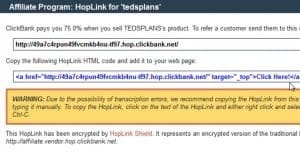3 Ways to Properly Use LinkedIn for Traffic Generation

LinkedIn is a great social network that’s overlooked by many webmasters due to its narrow niche. The network was designed for companies and potential employees to network on a professional network. For marketers, this means it’s virtually valueless as a consumer purchase funnel, but it’s great for B2B and business blogging. If you fall in the right niche, you can find success on LinkedIn just by using it properly.
1. Fill Out and Use the Site’s Features
When you register, you need – absolutely need – to fill out your profile as completely as possible. If you’re registering a company page, you need to make it personal in a professional sense. A branded, personalized banner image, a logo, a story about your company history and more fills out your information. For personal profiles, if you’re representing yourself as a consultant or CEO, you need to maintain a professional atmosphere with a clean, friendly portrait. Speak more to people than to businesses, and speak more as a person than as a business.
Once your profile is established, you need to build up your connections. Think of the site the same way you might a collection of business cards or a phone book. Fill it with people who:
- Have worked under you or over you, or as colleagues
- Have attended schools, seminars or events alongside you
- Have a position in your contact lists or groups
- Have been recommended as connections by your existing connections
- Are customers or partners
There’s no such thing as too many connections on LinkedIn. You can only reach people who are connected to you in some way, so expanding your network gives you that much more room to work.
Make special note of any individuals or businesses who can be considered LinkedIn Influencers. This includes the people who are general influencers on the site, and it includes people who may not have the official influencer status but who are influential in your industry. Follow these people so you have a direct connection to current events and information.
You also need to maintain a baseline level of activity on the site. Post status updates regularly, at least twice per week. You don’t need daily updates, at least not right away, but you need to post frequently enough that you’re always visible.
When you’re posting links to outside content, make sure to mix your own content with that of others. You don’t want to flood your connections with your content to the exclusion of others; it makes you look self-serving. On the other hand, you need to occasionally link to your content or else your drive to bring in traffic falls flat.
2. Join, Create and Use Groups
Groups are where the real magic of community occurs on LinkedIn. There are over 1.5 million groups on LinkedIn, but you’re only allowed to join up to 50 of them at any one time. Thankfully, many of those groups will not be valuable to you.
To find a list of possible groups to join, click the interests tab and then the groups heading. From there, search for various topics related to your industry and interests. Gather links to various groups you may consider joining, to analyze them later.
- Avoid groups with too few members, unless they are extremely exclusive or extremely valuable. Small, inactive groups don’t help you spread your message.
- Avoid groups with too many members, unless they are extremely high profile and are seen as The Place To Be. It’s too easy to be drowned out among the other voices.
- Avoid groups that aren’t active. You need active members to see your links.
- Avoid groups that aren’t related to your industry.
Don’t be afraid to join groups. On the other hand, be even less afraid to leave them. Join them a few at a time, and make sure you’re capable of managing your presence in all of them. If you find yourself neglecting a group, leave it. Avoid jumping in to joining all 50 groups right away.
Once you have grown a reputation on LinkedIn and have a reasonable following, you can create your own group. You can do this if none of the existing groups in your niche are active or valuable. You can do this to maintain a branded following, as well.
When you own a group, make sure you have the time and energy to moderate it. Set guidelines for what can and should not be in your group, and enforce them. If you let your group lie unmoderated, it’s either going to collapse or it’s going to get out of control. You will also need to take the time to grow your group through advertising, carefully, without spam.
A successful group can position you as a leader in your niche, by way of being the only successful group, or the most successful group. That said, it takes work to accomplish. Don’t start your own group if you’re not sure you can see it through.
3. Create and Publish Engaging Content
At the end of the day, LinkedIn is a social network. You need to treat it the same way you would treat any other social network.
- Build an audience.
- Grow that audience through unique and insightful comments.
- Post compelling content.
- Link to compelling content you have published.
- Link to content you curate for your audience.
- Respond to community comments.
- Position yourself as a relative expert in your field.
Content is at the center of this game. You need to post frequently with content you have found around the Internet, either your own or that of others. You need to add your own opinions and insight. In groups, this means the start of a discussion. On your page, it means brief engagement. You need to pay just as much attention to the content you curate as you do to the content you create.
Make sure your content is focused on your niche and industry. The further off-topic you stray, the less interested your followers will be. Make sure you can tie everything back to your niche if prompted, though you don’t need to make the connection explicit every time.
LinkedIn gives you the ability to mail your followers. A direct message in the form of a newsletter can be a great traffic driver. You do, however, need to avoid spamming your followers by using this feature too often.
 ContentPowered.com
ContentPowered.com







